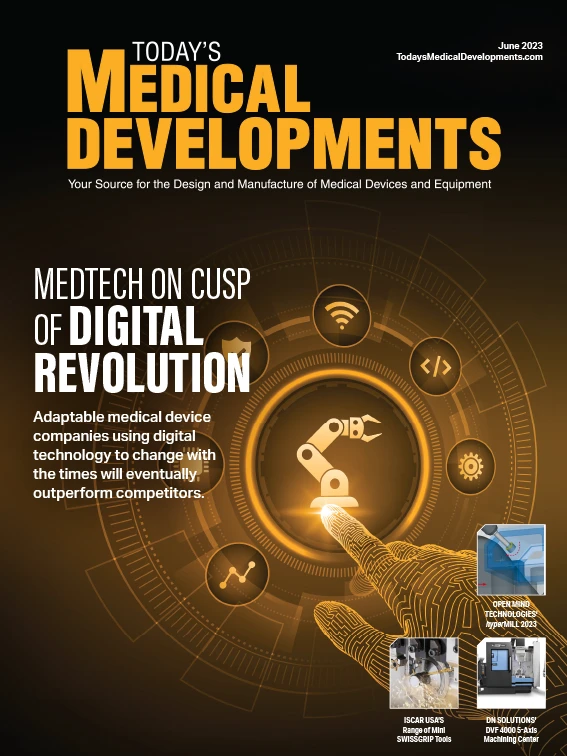
Laser processing is a revolutionizing medical device manufacturing technology that’s upheld the medical standard since the 1970s. Laser processing uses a laser beam to alter a material, whether by removal, bonding, or surface reforming. Usually done with a laser marking machine, this technology has improved efficiency, compliance, and designs within the medical device industry.
1. Medical device manufacturing with laser technology
Laser technology is versatile, precise, efficient, and permanent, which is why many medical device manufacturers use it. From marking unique device identifiers (UDIs) to item numbers, cutting devices, and assembly, laser medical marking technology spans the entire manufacturing process – from raw materials to final products.
The laser marking industry for medical devices is growing as laser technology companies introduce all-encompassing machines. Companies such as KEYENCE include advantages like 3-axis technology that can autofocus and autocorrect for uniform marking across all surfaces or shapes. It also includes intuitive software for uploading the exact mark, cut, or 2D code/UDI mark. Features such as the internal camera make it easy to build custom programs for each medical device and design to process personalized, permanent, and high-contrast marks.
Due to this versatility, medical device manufacturers use laser technology to mark components and parts, such as:
- Tubes
- Bolts
- Catheter wires
- Needle hubs
- Instrument covers
- Drills
- Catheter connections
- Small steel objects
- 2D codes
2. Laser marking is the medical standard
If you work in medical manufacturing, you care about upholding the U.S. Food and Drug Administration’s (FDA) standard of ensuring high quality, safe, and effective products.
Laser marking for medical devices has become the medical standard because it aligns with all FDA regulations – marks on devices are permanent, accurate, and anti- corrosive. Not only does laser marking fit these basic standards, but laser marking goes beyond by not threatening the integrity of the device. With such a small beam and the use of cold marking, even sensitive materials such as stainless steel are undistorted by laser marks.
3. Meeting UDI directives
In 2013, the FDA established a UDI system to provide a centralized traceability database for all medical devices. As of 2022, the FDA revised the regulation to require all medical devices besides Class 1 consumer health products to have a traceable UDI readable by humans and machines for connection to the Global Unique Device Identification Database (GUDID). The GUDID stores device information shared with the AccessGUDID, letting manufacturers, healthcare professionals, and patients view their device information.
UDIs are here to stay and so are laser markers. The increased accountability, anti-counterfeit efforts, and safety benefits can’t be beaten. Printing and stamping industries have attempted to make their way into the medical device industry and meet UDI directives, but often fall short with easily corroded designs that smudge after too much sanitization and contaminate medical spaces.
Laser marking for medical devices is the future of UDI directives. It’s permanent, works on diverse materials, marks high-contrast UDIs that are easily readable, and has no vulnerability to contamination. Laser processing stands out because it can keep up with advancements in medical devices as they become smaller and sleeker.
4. Advancing medical device design
As contemporary medicine evolves into more personalized patient approaches, laser processing easily keeps up. Personalized cochlear implants, neuromodulation devices, and cardiac pacemakers are booming with the help of laser processing. Lasers cut cochlear and neuromodulation devices down to one-thousandth of an inch for the perfect fit. Lasers also weld pacemaker packaging seals without compromising device integrity.These medical improvements were already happening, but with a microscopic and manual assembly taking exponentially longer than laser processing. Removing the tedious manual work and replacing it with laser processing allows medical advancement to move faster because manufacturing can keep up with new ideas.
5. Improving efficiency in healthcare
Improved efficiency in healthcare falls under a few buckets – manufacturing, recall, and patient experience.
Manufacturing: Laser processing machines can repeat tasks with a much higher degree of precision and repeatability than human or manual processes, delivering uniformity across all devices.
Recall: One of the most critical aspects of the implementation of UDIs is the ability to quickly recall products. Laser marking allows this because devices can be easily traced through a database based on the mark. Additionally, since there is full transparency about the life cycle of the device, manufacturers can efficiently investigate the recall and fix it swiftly.
Patients: The precision laser cutting can achieve with stents, implants, surgical devices, and more s for more efficient and patient-friendly devices. The devices fit patients better, minimize invasive surgery, and in turn, add more comfort to a patient's life.
The next steps
The medical device manufacturing industry is transforming with increased demand and new laser technology capabilities. The technology’s remarkable versatility, precision, and efficiency have proven how critical laser processing is to the medical field. Lasers are only expected to grow as they outperform basic standards set by the FDA and improve the lives of patients.
Keyence Corp. of America
https://www.keyence.com

Explore the June 2023 Issue
Check out more from this issue and find your next story to read.
Latest from Today's Medical Developments
- IMTS 2026 runs Sept. 14-19 at McCormick Place in Chicago, Illinois
- Master Bond’s MasterSil 800Med
- ZEISS celebrates 100 years of advancing innovation in the US
- Teleflex sells acute care and urology businesses for $2.03 billion
- HANNOVER MESSE: Where research and manufacturing meet
- What’s next for the design and manufacturing industry in 2026?
- Arcline to sell Medical Manufacturing Technologies to Perimeter Solutions
- Decline in German machine tool orders bottoming out





